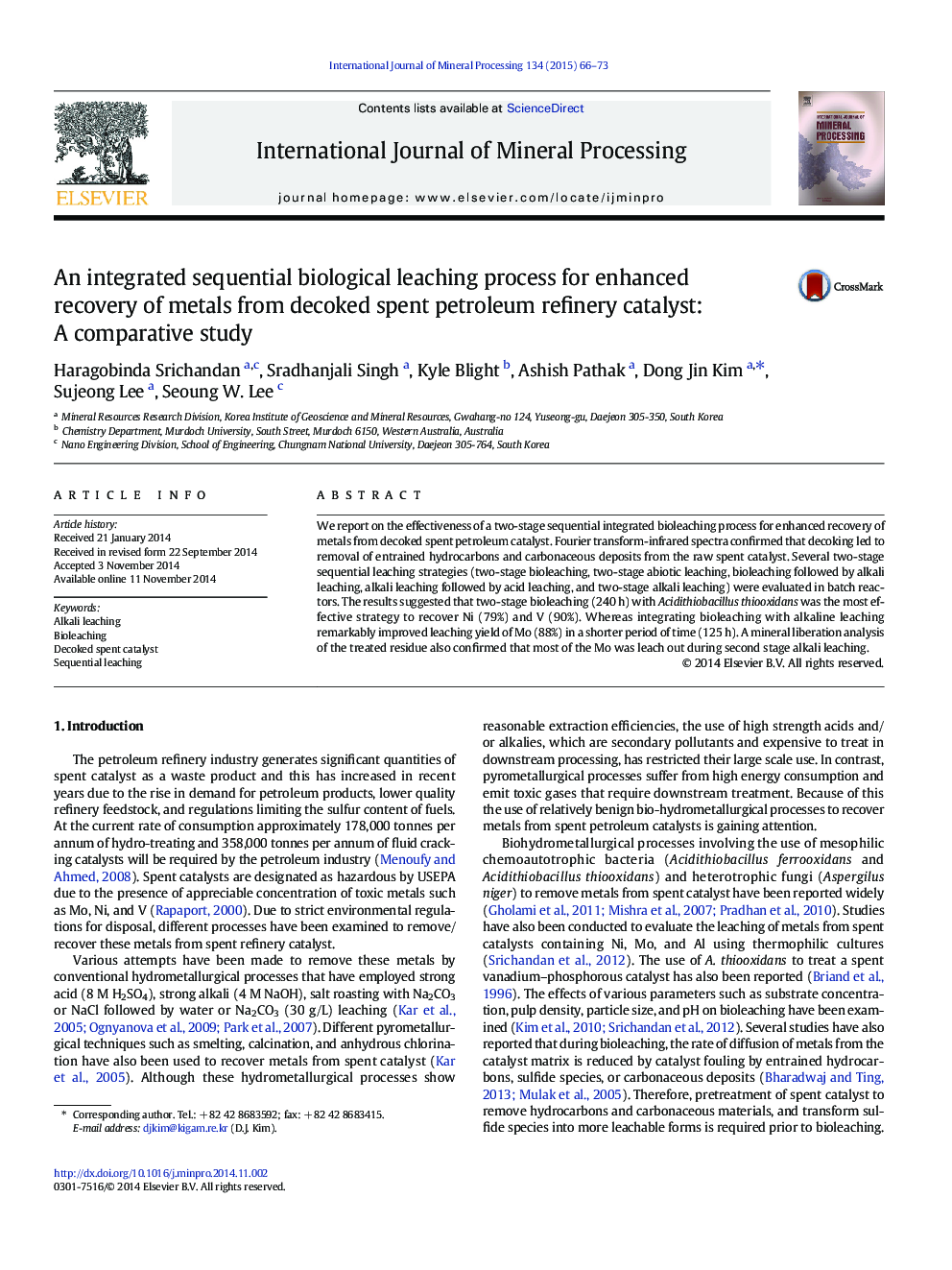| Article ID | Journal | Published Year | Pages | File Type |
|---|---|---|---|---|
| 213947 | International Journal of Mineral Processing | 2015 | 8 Pages |
•Decoking caused removal of entrained hydrocarbons and carbon from coked spent catalyst.•Two-stage sequential bioleaching significantly enhanced the leaching yields of Ni and V.•Integration of bioleaching with alkaline leaching remarkably improved recovery of Mo.•Sequential processes led to the significant increment in leaching yields of metals as compared to single stage.
We report on the effectiveness of a two-stage sequential integrated bioleaching process for enhanced recovery of metals from decoked spent petroleum catalyst. Fourier transform-infrared spectra confirmed that decoking led to removal of entrained hydrocarbons and carbonaceous deposits from the raw spent catalyst. Several two-stage sequential leaching strategies (two-stage bioleaching, two-stage abiotic leaching, bioleaching followed by alkali leaching, alkali leaching followed by acid leaching, and two-stage alkali leaching) were evaluated in batch reactors. The results suggested that two-stage bioleaching (240 h) with Acidithiobacillus thiooxidans was the most effective strategy to recover Ni (79%) and V (90%). Whereas integrating bioleaching with alkaline leaching remarkably improved leaching yield of Mo (88%) in a shorter period of time (125 h). A mineral liberation analysis of the treated residue also confirmed that most of the Mo was leach out during second stage alkali leaching.
Graphical abstractFigure optionsDownload full-size imageDownload as PowerPoint slide
